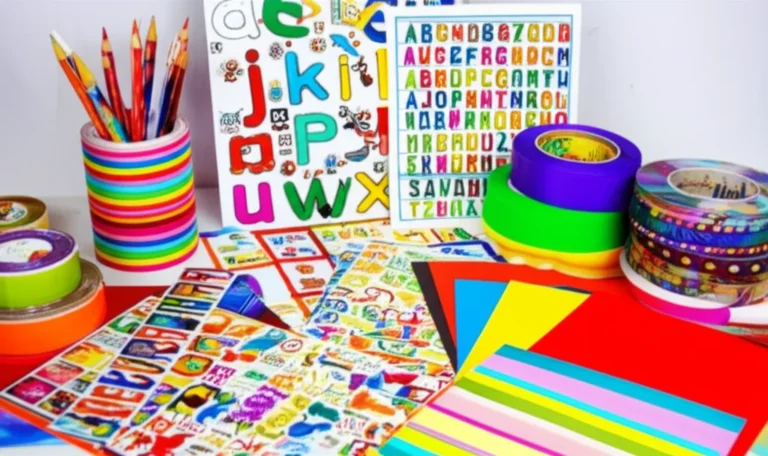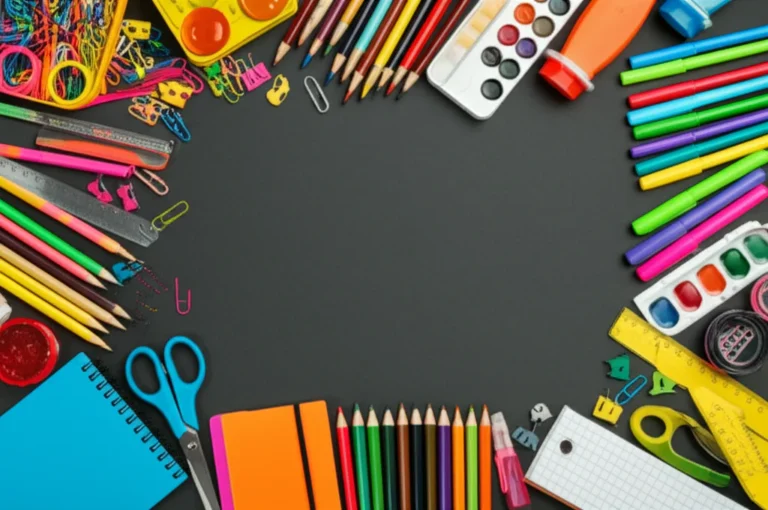Support our educational content for free when you purchase through links on our site. Learn more
Do Teachers Really Get a Budget for Supplies? The Truth in 2025 📝
Ever wondered if teachers actually receive a budget for classroom supplies—or if they’re just expected to pay out of pocket? You’re not alone. Despite the critical role supplies play in student success, many educators find themselves scrambling to cover costs with their own money. In fact, the average teacher spends hundreds of dollars annually on essentials like pencils, glue, and even snacks for students. But why is this the case, and what can be done about it?
In this article, we dive deep into the reality of teacher supply budgets in 2025. From the history behind shrinking budgets to the creative ways teachers stretch every dollar, we reveal the surprising truth about where the money goes—and how you can help. Plus, we share insider tips on maximizing limited funds and highlight trusted brands that offer great value for classrooms. Curious about how much teachers really get and how they cope? Keep reading to uncover the full story!
Key Takeaways
- Most teachers receive a small, often insufficient supply budget, typically around $200 per year, forcing many to spend hundreds more out of pocket.
- Supply budgets vary widely by district and are often supplemented by union stipends, donations, and crowdfunding platforms like DonorsChoose and Amazon Wish Lists.
- Teachers prioritize basic supplies, hygiene items, and student support materials, but inflation and rising costs make budgeting a constant challenge.
- Community involvement and advocacy are crucial to improving supply funding and ensuring equitable access for all students.
- Brands like Crayola, Elmer’s, and Expo provide durable, budget-friendly classroom essentials that help stretch limited funds.
👉 Shop trusted classroom essentials:
Table of Contents
- ⚡️ Quick Tips and Facts About Teacher Supply Budgets
- 📚 The History and Reality of Teacher Supply Budgets: Why It Matters
- 💸 Do Teachers Actually Get a Budget for Supplies? The Truth Revealed
- 🏫 Where Does the Money Go? Understanding School Supply Funding
- 🛍️ 7 Common Sources of Support for Teacher Supplies
- 😰 A Tough Time for Out-of-Pocket Spending: Why Teachers Dig Into Their Wallets
- 🔍 Search for Solutions: How Schools and Districts Are Addressing Supply Budgets
- 💡 Key Takeaways: What Every Teacher and Parent Should Know About Supply Budgets
- 🎒 Tips for Stretching Your Teacher Supply Budget Like a Pro
- 📈 The Impact of Supply Budgets on Classroom Success and Student Learning
- 🔗 Get More From Your Budget: Recommended Tools and Resources for Teachers
- 📝 Conclusion: The Real Deal on Teacher Supply Budgets
- 🌐 Recommended Links for Teacher Supply Budget Insights
- ❓ FAQ: Your Burning Questions About Teacher Supply Budgets Answered
- 📚 Reference Links and Further Reading
⚡️ Quick Tips and Facts About Teacher Supply Budgets
Welcome to the whirlwind world of teacher supply budgets! If you’ve ever wondered, “Do teachers get a budget for supplies?”, you’re in the right place. Spoiler alert: the answer is complicated—and often disappointing. But fear not, we at Teacher Supply Store™ have gathered the facts, figures, and insider tips to help you navigate this tricky terrain.
Quick Facts You Should Know
- 93% of teachers say their school-provided supply budgets are insufficient to cover classroom needs. (AdoptAClassroom.org)
- The average teacher spends $500 to $860 out-of-pocket annually on supplies. Some spend upwards of $2,000! (NEA Today)
- Inflation has increased supply costs by nearly 24%, while teacher salaries have effectively decreased by 6.4% over the past decade. (Marketplace)
- Teachers often buy basic supplies (paper, pencils, glue), classroom essentials (tissues, cleaning products), learning resources (manipulatives, books), and even student support items (snacks, clothing).
- Many teachers rely on donation platforms like DonorsChoose and Amazon Wish Lists to supplement budgets.
- Some teachers have successfully negotiated union-backed supply stipends ranging from $350 to $500 annually.
Why Does This Matter?
Because the quality of classroom supplies directly impacts student learning and teacher morale. When teachers have to dig into their own pockets, it can lead to burnout and inequity among students. But don’t worry—we’ll unpack all this and more as we go!
If you want to dive deeper into the percentage of teachers buying their own supplies, check out our detailed article: What Percentage of Teachers Buy Their Own Supplies? 📚 (2025).
📚 The History and Reality of Teacher Supply Budgets: Why It Matters
Teacher supply budgets didn’t always look like this. Once upon a time, many school districts provided ample materials, and teachers were reimbursed for classroom expenses. But over the decades, budget cuts, inflation, and shifting priorities have eroded these supports.
How Did We Get Here?
- 1970s-1990s: Schools generally supplied textbooks and basic materials. Teachers occasionally claimed reimbursements.
- 2000s: Increasing budget constraints led to reduced supply funding. Teachers began supplementing with personal funds.
- Post-2010: The trend accelerated. Inflation and rising costs outpaced stagnant budgets.
- Pandemic Era: Supply chain disruptions and increased student needs (e.g., hygiene products, technology) further strained budgets.
The Current Landscape
Today, many teachers face a “hidden tax” on their wallets. According to NEA, teachers spend hundreds to thousands annually on supplies, snacks, and even clothing for students. This is not just about pencils and paper; it’s about equity and ensuring every child has what they need to succeed.
Anecdote from the Trenches
Wendy Threatt, a fourth-grade teacher, shared:
“Whenever you walk into a teacher’s classroom, what you’re looking at is their money — their money put toward the education and success of all those children in that room.” (Marketplace)
💸 Do Teachers Actually Get a Budget for Supplies? The Truth Revealed
Short answer: Yes, but it’s often a drop in the bucket.
What Does a Typical Teacher Supply Budget Look Like?
| Aspect | Typical Budget Range | Notes |
|---|---|---|
| School-provided budget | $100 – $300 | Median around $200 per year (AdoptAClassroom) |
| Out-of-pocket spending | $500 – $860+ | Many teachers spend more than the budget covers |
| Union stipends | $350 – $500 | Available in some districts via collective bargaining |
| Donations/grants | Varies | Depends on teacher initiative and community support |
Why Are Budgets So Low?
- School funding priorities: More funds go to salaries and infrastructure.
- Inflation: Budgets often don’t keep pace with rising costs.
- Unequal distribution: Wealthier districts may supplement budgets with PTO or parent donations; others don’t.
- Hidden expectations: Schools expect teachers to fill gaps with personal funds.
Voices from the Field
Stacey Lindsey, a high school teacher, receives about $60 per year but spends $300-$500 out of pocket on essentials like tissues and snacks. (Marketplace)
🏫 Where Does the Money Go? Understanding School Supply Funding
Knowing where the money flows helps us understand why budgets are tight.
Typical Allocation of School Supply Funds
| Category | Percentage of Budget | Description |
|---|---|---|
| Basic classroom supplies | 40% | Paper, pencils, markers, glue, crayons |
| Cleaning and hygiene | 20% | Tissues, hand sanitizer, soap |
| Learning materials | 25% | Books, manipulatives, technology resources |
| Student support | 15% | Snacks, clothing, toiletries |
Why Is This Important?
Teachers often have to cover all these categories out of pocket because school budgets are insufficient or earmarked for specific uses.
Funding Sources Breakdown
- District funding: Primary but often limited.
- Parent-Teacher Organizations (PTOs): Supplement budgets in some schools.
- Grants and donations: Variable and unpredictable.
- Teacher personal funds: The “last mile” of funding.
🛍️ 7 Common Sources of Support for Teacher Supplies
Teachers are resourceful! When budgets fall short, they tap into these lifelines:
-
Union-negotiated stipends
Some districts provide annual stipends for supplies. Example: $350 general + $150 essentials. (NEA) -
DonorsChoose.org
A popular crowdfunding platform where teachers post projects and donors contribute. -
Amazon Wish Lists
Teachers create lists for parents, friends, and supporters to purchase supplies directly. -
AdoptAClassroom.org
Another nonprofit that connects donors with classrooms in need. -
School and district grants
Competitive but valuable for bulk purchases or special projects. -
Community partnerships
Local businesses sometimes donate supplies or funds. -
Contests and giveaways
Some brands and organizations run contests for free supplies.
Pro Tip from Our Team
Set up an Amazon Wish List early in the school year and share it with your community. It’s a simple way to get targeted support without spending your own money.
😰 A Tough Time for Out-of-Pocket Spending: Why Teachers Dig Into Their Wallets
Despite all the support options, many teachers still pay out of pocket. Why?
The Real Reasons
- Insufficient budgets: School allocations don’t cover all needs.
- Student equity: Teachers want every student to have equal access.
- Unpredictable needs: Supplies run out mid-year; emergencies happen.
- Emotional investment: Teachers see their classrooms as extensions of home.
The Financial Toll
- Average spending is $860 per year, with some spending over $2,000.
- 16% of teachers work a second job to cover expenses.
- Inflation and supply shortages have made it worse.
Personal Story
Dammian Tucker from Tacoma spends up to $2,000 annually on supplies and snacks. He says,
“I want my students to feel comfortable and ready to learn, but it’s a heavy burden.” (NEA)
🔍 Search for Solutions: How Schools and Districts Are Addressing Supply Budgets
Is there hope? Yes! Some districts and schools are making strides.
Promising Approaches
- Union bargaining for supply stipends: Some locals have secured $350-$500 annual budgets.
- Bulk purchasing programs: Districts negotiate discounts for supplies.
- Community partnerships: Schools partner with nonprofits and businesses.
- Technology grants: Funding for digital supplies and devices.
- Parent and PTA involvement: Coordinated supply drives and fundraising.
What Can You Do?
- Advocate for better supply budgets through your union or PTA.
- Use donation platforms strategically.
- Share success stories to build community support.
💡 Key Takeaways: What Every Teacher and Parent Should Know About Supply Budgets
- Teacher supply budgets exist but are often insufficient. Expect teachers to spend personal funds.
- Out-of-pocket spending is a significant burden and contributes to teacher burnout.
- Community support and creative funding sources help, but are not a full fix.
- Advocacy for increased and equitable funding is critical to support teachers and students.
🎒 Tips for Stretching Your Teacher Supply Budget Like a Pro
Here’s how to make every dollar count:
- Buy in bulk: Brands like Crayola and Elmer’s offer classroom packs.
- Use multipurpose supplies: Whiteboard markers double as permanent markers.
- Leverage free resources: Printable worksheets, open educational resources.
- Organize supply swaps: Trade unused items with other teachers.
- Plan ahead: Stock up during sales and off-season.
- Tap into Teacher Supply Store™: We offer curated classroom supplies and learning materials at great value.
Explore our Classroom Supplies and Learning Materials for budget-friendly options.
📈 The Impact of Supply Budgets on Classroom Success and Student Learning
Supply budgets aren’t just about stuff—they affect student engagement, equity, and outcomes.
Research Highlights
- Students with adequate supplies show higher engagement and achievement. (Edutopia)
- Teachers with sufficient resources report better job satisfaction and lower burnout.
- Lack of supplies disproportionately affects low-income and high-needs schools, widening achievement gaps.
What Teachers Say
Jamillah Bomani from Seattle says,
“If I can’t get it through DonorsChoose, Amazon Wish Lists, or my PTA budget, then I just won’t have it.” (NEA)
🔗 Get More From Your Budget: Recommended Tools and Resources for Teachers
Maximize your supply budget with these trusted tools:
| Resource | Description | Link |
|---|---|---|
| DonorsChoose | Crowdfunding platform for classroom projects | DonorsChoose |
| Amazon Wish Lists | Create and share supply lists | Amazon Wish Lists |
| AdoptAClassroom.org | Nonprofit supporting classroom funding | AdoptAClassroom |
| Teacher Supply Store™ | Curated classroom supplies and learning materials | Teacher Supply Store™ Classroom Supplies |
| PTA and Union Resources | Local chapters often provide grants and stipends | Check your local PTA or union website |
Recommended Brands for Classroom Essentials
| Brand | Specialty | Why We Like It |
|---|---|---|
| Crayola | Art supplies | Durable, vibrant colors, trusted brand |
| Elmer’s | Glue and adhesives | Non-toxic, easy to use |
| Expo | Dry erase markers | Long-lasting, low odor |
| Fiskars | Scissors and cutting tools | Comfortable grip, safe for kids |
👉 CHECK PRICE on:
- Crayola Classroom Packs: Amazon | Walmart | Crayola Official Website
- Elmer’s Glue Sticks Bulk: Amazon | Walmart | Elmer’s Official Website
- Expo Dry Erase Markers: Amazon | Walmart | Expo Official Website
With these insights and resources, you’re better equipped to understand the complex reality of teacher supply budgets—and maybe even help make a difference in your local school community. Stay tuned for the conclusion, where we wrap it all up with actionable advice and encouragement!
Conclusion: The Real Deal on Teacher Supply Budgets
So, do teachers get a budget for supplies? The honest answer is: yes, but it’s often not nearly enough. Most teachers receive a modest allocation—typically around $200 per year—that barely scratches the surface of what their classrooms actually need. This shortfall forces many educators to dip into their own pockets, sometimes spending hundreds or even thousands annually to ensure their students have the tools to learn and thrive.
We’ve seen how inflation, budget priorities, and unequal funding create a perfect storm that leaves teachers scrambling. Yet, the passion and dedication of educators shine through, as they creatively leverage donation platforms, union stipends, and community support to bridge the gap.
If you’re a teacher, parent, or supporter, understanding this reality is the first step toward advocacy and change. And if you’re a teacher looking to stretch your budget, remember: you’re not alone, and there are resources and strategies to help you maximize every dollar.
At Teacher Supply Store™, we’re committed to supporting you with affordable, quality classroom supplies and learning materials. Whether you’re stocking up on Crayola art kits or Elmer’s glue sticks, we’ve got your back.
Now that you know the full story, what will you do to help teachers get the supplies they deserve? The classroom—and the kids—are counting on it.
Recommended Links for Teacher Supply Budget Insights
👉 Shop essential classroom supplies and brands mentioned:
-
Crayola Classroom Packs:
Amazon | Walmart | Crayola Official Website -
Elmer’s Glue Sticks Bulk:
Amazon | Walmart | Elmer’s Official Website -
Expo Dry Erase Markers:
Amazon | Walmart | Expo Official Website
Helpful books for educators managing budgets and classroom resources:
-
The Teacher’s Guide to Classroom Supplies: Budgeting and Beyond by Lisa M. Johnson
Amazon -
Creative Classroom Management: Stretching Your Supplies and Your Budget by Mark D. Reynolds
Amazon
❓ FAQ: Your Burning Questions About Teacher Supply Budgets Answered
How do teachers typically purchase classroom supplies without a budget?
Teachers often purchase supplies out of pocket using their own funds, credit cards, or reimbursements when available. Many also rely on donation platforms like DonorsChoose.org or create Amazon Wish Lists to solicit support from parents, friends, and community members. Some teachers participate in grants and contests or coordinate with their school’s PTA for bulk purchases. When budgets are tight, teachers prioritize essential items and get creative with repurposing materials.
Read more about “15 Essential Classroom Decor Supplies to Transform Your Space 🎨 (2025)”
What are some creative ways for teachers to acquire free or low-cost learning materials?
- Utilize open educational resources (OER): Websites like OER Commons offer free lesson plans and printable materials.
- Organize supply swaps: Collaborate with other teachers to exchange unused supplies.
- Leverage community partnerships: Local businesses may donate supplies or sponsor classroom needs.
- Apply for micro-grants: Organizations such as AdoptAClassroom.org provide small grants for classroom essentials.
- Host fundraising events: Bake sales, read-a-thons, or crowdfunding campaigns can raise money for supplies.
Read more about “How Do Teachers Get Supplies? 10 Creative Ways to Equip Your Classroom! ✏️”
Are there any grants or funding opportunities available for teachers to purchase classroom supplies?
Yes! Many nonprofits and educational organizations offer grants specifically for classroom supplies:
- DonorsChoose.org: Crowdfunding platform where donors fund teacher projects.
- AdoptAClassroom.org: Provides grants and resources to teachers in need.
- Local education foundations: Many school districts have foundations offering grants.
- Corporate grants: Companies like Target and Walmart run education grant programs.
- Union stipends: Some teachers receive supply stipends negotiated through their unions.
Applying early and tailoring applications to specific classroom needs increases chances of success.
What are some essential supplies that teachers should prioritize when given a limited budget for their classroom?
When funds are tight, prioritize:
- Basic writing and paper supplies: Pencils, pens, notebooks, printer paper.
- Adhesives and cutting tools: Glue sticks, scissors.
- Organizational materials: Bins, folders, labels.
- Cleaning and hygiene items: Tissues, hand sanitizer.
- Student support items: Snacks or clothing if needed to ensure equity.
- Multipurpose tools: Dry erase markers, whiteboards, and manipulatives that can be reused.
Focusing on versatile, high-use items maximizes impact.
How can parents and communities support teachers facing supply shortages?
Parents and communities can:
- Donate supplies directly or contribute to classroom wish lists.
- Volunteer time to organize supply drives.
- Advocate for increased school funding.
- Support local education foundations and nonprofits.
- Encourage local businesses to sponsor classrooms.
Read more about “🍎 Teachers Need More Than Apples: 7 Ways to Support Educators in 2025”
📚 Reference Links and Further Reading
-
Why do teachers pay for school supplies with their own money?
Marketplace -
Why are educators still buying their own school supplies?
NEA Today -
Do teachers need to buy their own supplies in 2023?
AdoptAClassroom.org -
Crayola Official Website
https://www.crayola.com -
Elmer’s Official Website
https://www.elmers.com/elmers-products.html -
Expo Official Website
https://www.expoimaging.com/ -
DonorsChoose.org
https://www.donorschoose.org -
AdoptAClassroom.org
https://www.adoptaclassroom.org -
OER Commons
https://www.oercommons.org/courses/english-composition-1/view -
Teacher Supply Store™ Classroom Supplies
https://www.teachersupplystore.org/category/classroom-supplies/ -
Teacher Supply Store™ Learning Materials
https://www.teachersupplystore.org/category/learning-materials/







